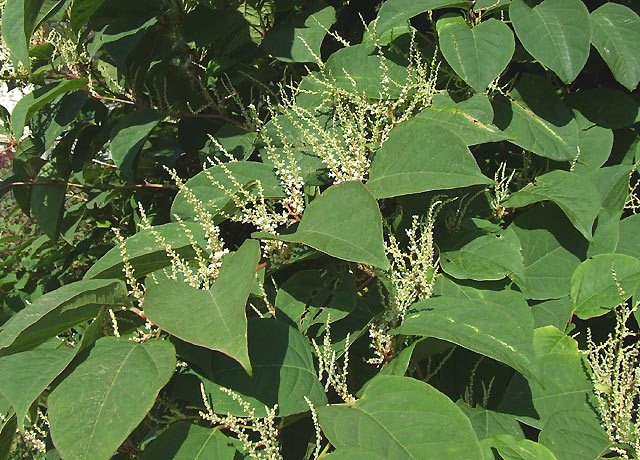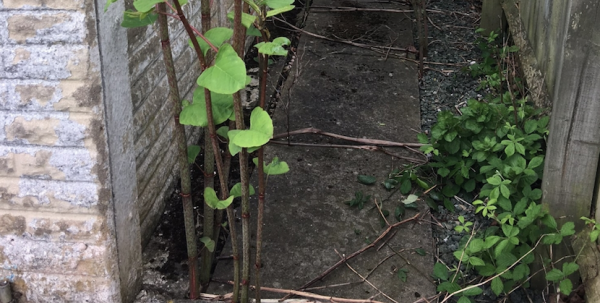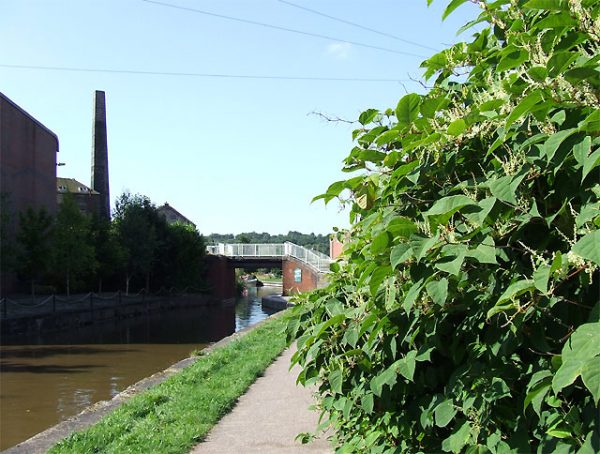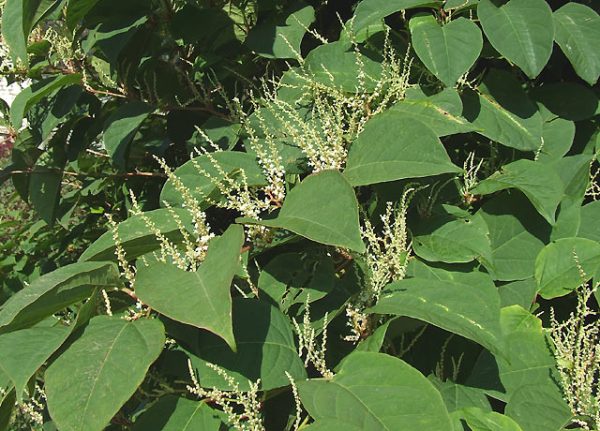Everything you need to know about Japanese knotweed and how to remove it

Gardeners, homeowners, landowners and even the judiciary agree Japanese knotweed is a pernicious pain in the grass – and wherever else it decides to show up.
Japanese knotweed, also called Fallopia japonica, is more humorously known as monkey fungus, elephant ears or donkey rhubarb. But it’s no laughing matter.
Whatever you call it, it would be an unwelcome guest in your garden. These are the questions that need answering about Japanese knotweed.
Why is Japanese knotweed such a problem?
The bamboo-like plant grows quickly and strongly and spreads through its underground roots or “rhizomes”. At its most prolific it can grow up to 20cm every day.
It can grow through concrete and asphalt and its roots can go down up to 3m in depth. It can undermine the structural integrity of buildings.
There are no natural predators either meaning the weed can grow unabated, swamping other plants.
It is difficult and expensive to eradicate and dispose of because soil or plant material contaminated with Japanese knotweed is classified as controlled waste.
Some banks and building societies refuse to offer mortgages for properties affected by Japanese knotweed. In some cases property values have fallen by many thousands of pounds because of its existence.
What does Japanese knotweed look like?
Japanese knotweed is common in urban areas, particularly on wasteland, railways, roadsides and riverbanks. If not contained it can spread easily into gardens.
It has heart-shaped leaves and hollow green canes with purple speckles. The canes start to appear in early spring and be mature by early summer. Spikes of white or cream flowers appear in late summer.
The plant tends to grow in dense clumps. The canes turn brown in autumn, but can remain standing throughout the winter. Fresh shoots grow up around them the following spring.
How to find out if there is Japanese knotweed in your area

There are over 50,000 known Japanese knotweed infestations in the UK. However, there are some areas in the country such as the north west and south east where the plant is more likely to grow.
Luckily Environet UK have created a heatmap so you can see whether your area is a high risk for Japanese knotweed. All you need to do is simply enter your postcode and their database will let you know how rife Japanese knotweed is in your area.
How can I get rid of Japanese knotweed from my garden?
Japanese knotweed needs to be controlled before it spreads and becomes a severe problem.
You can start by digging up the knotweed but the rhizomes will be tough and deep. Cut back and dig out regularly to deplete the strength remaining in the rhizomes. It may take several years to eradicate completely.
Digging creates problems as Japanese knotweed is classed as “controlled waste” under the Environmental Protection Act 1990. Under the Wildlife and Countryside Act 1981, it’s an offence to cause Japanese knotweed to grow in the wild. That means it is illegal to simply dump it.
Once dug up, it can be destroyed by allowing the plants to thoroughly dry out and then burning it.
You could also try a weed-killer containing glyphosate. The best time to spray is during flowering in late summer, but it may be easier to spray the foliage in May. The regrowth can then be treated mid-summer and again in September. Check again the following spring and repeat the process.
You could also try cutting back the stems and applying weed killer inside the cut stems.
Failing all else, get professional help. You should be able to get contractors’ details from your local authority.
Can I take legal action against the Japanese knotweed blight?

Landowners can claim damages if Japanese knotweed has encroached on their property following a Court of Appeal ruling in favour of two householders whose properties were affected by the plant.
Stephen Williams and Robin Waistell, neighbours in Maesteg, South Wales, made a claim against Network Rail – which owns land immediately behind their properties – because Japanese knotweed spread from its land to the neighbours’ gardens.
They brought a successful claim against the rail operator at Cardiff County Court and were awarded damages in 2017.
Network Rail challenged that at a Court of Appeal hearing and the court ruled they were entitled to damages because the plant’s roots, or “rhizomes”, had extended beneath their properties.
Master of the Rolls Sir Terence Etherton said: “Japanese knotweed, and its roots and rhizomes, does not merely carry the risk of future physical damage to buildings, structures and installations on the land.
“Its presence imposes an immediate burden on landowners who face an increased difficulty in their ability to develop, and in the cost of developing, their land, should they wish to do so, because of the difficulties and expense of eradicating Japanese knotweed from affected land.
“In this way, Japanese knotweed can fairly be described as a natural hazard which affects landowners’ ability fully to use, enjoy and even insure their property and, in doing so, interferes with the land’s amenity value.”
A more recent case suggests that even when Japanese knotweed has been treated, homeowners could recover the loss of value to their property through legal action. This is because, even when knotweed is treated, the roots remain in the ground, which causes “a stigma that’s then attached [to the house].”
Where did Japanese knotweed come from?

Japanese knotweed was brought to Europe from Japan in the Victorian era during the mid-19th century by German botanist Phillipp von Siebold. He had found it growing on the sides of volcanoes.
It was initially lauded for its ease of cultivation, beauty and potential as animal feed. In 1847 it was named the “most interesting new ornamental plant of the year” by the Society of Agriculture and Horticulture at Utrecht in Holland.
In 1854 the plant was sent to the Royal Botanic Gardens in Edinburgh and it was later sold by nurseries.
Is Japanese knotweed edible?
If you do have Japanese knotweed in your garden, don’t panic, it isn’t poisonous and it does not sting you. In fact, you can actually eat it.
The taste is, apparently, reminiscent of a lemony rhubarb, and can be used in a variety of sweet and savoury recipes.
Not only is it edible, it is rather good for you too. Japanese knotweed is an excellent source of vitamins A and C and contains potassium, zinc, phosphorus and manganese and has been used for centuries for treating ailments, such as respiratory infections.
However, not all parts of the plant are edible and they are only edible at a certain time of the year, mid-April to May. The shoots in the spring are tender enough to eat, but they have to be gathered before the stems become hard and woody.
A cautionary note, however; if you are going to eat it, you should know whether anyone has ever tried to eradicate it with herbicide in the past. If they have, it could be poisonous.
Still not put off? Here are some Japanese knotweed recipes.
Home insurance for any eventuality
Adrian Flux cannot insure your home and garden from being blighted by Japanese knotweed, but it can insure you for most other domestic eventualities. Call 0800 369 8590 for a fast and fuss free quote. Alternatively, request a callback at a time that suits you better.







